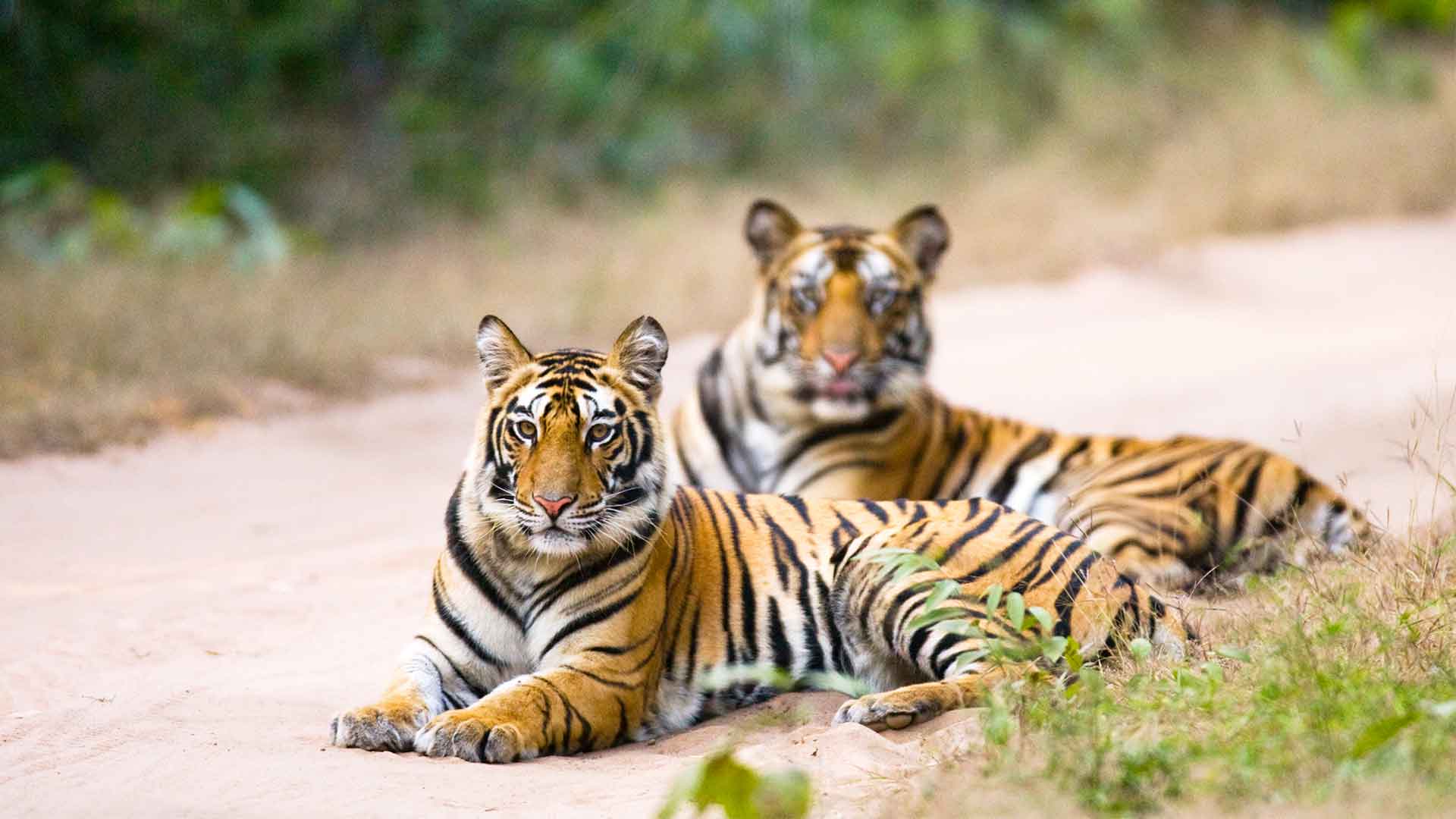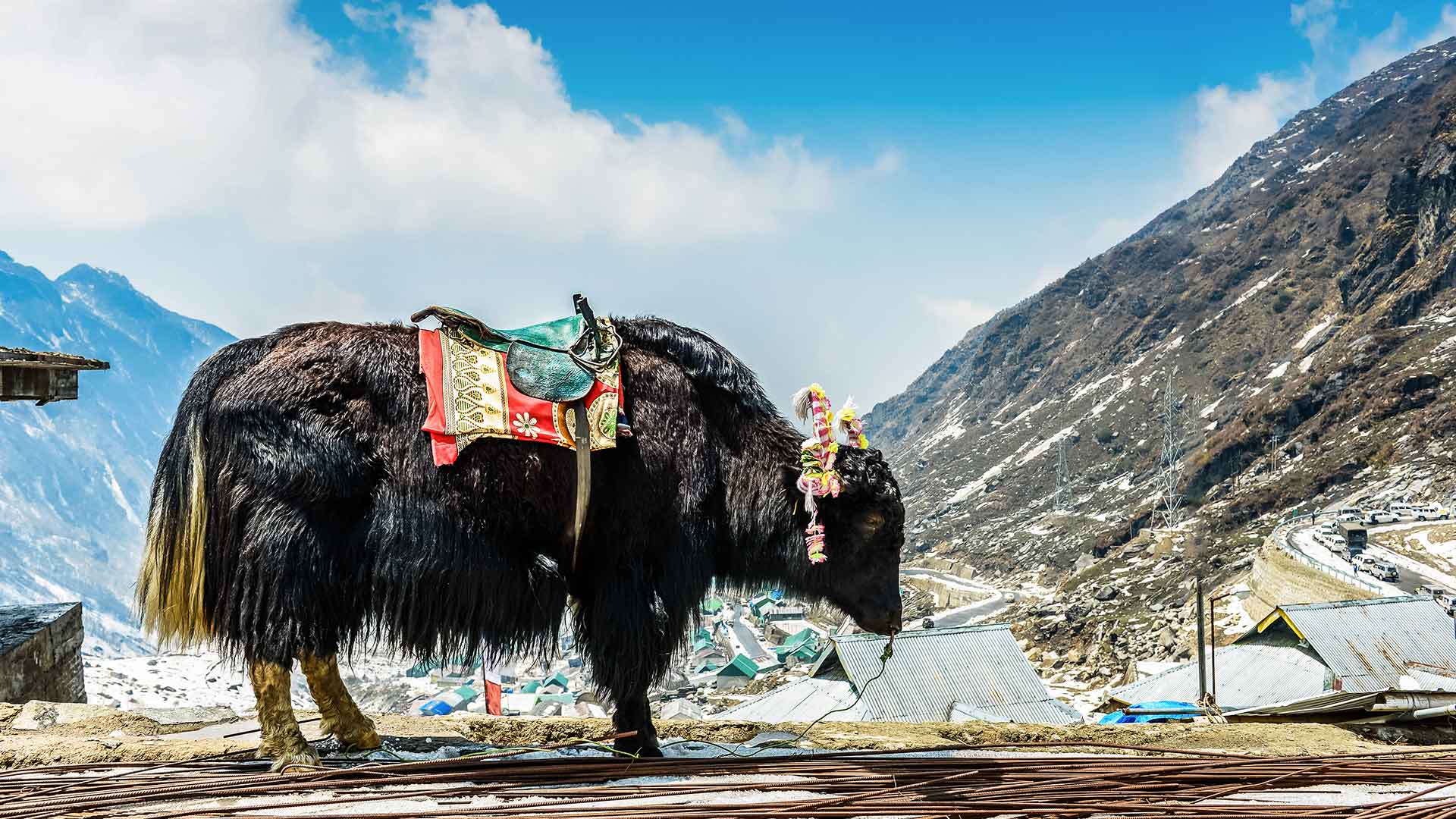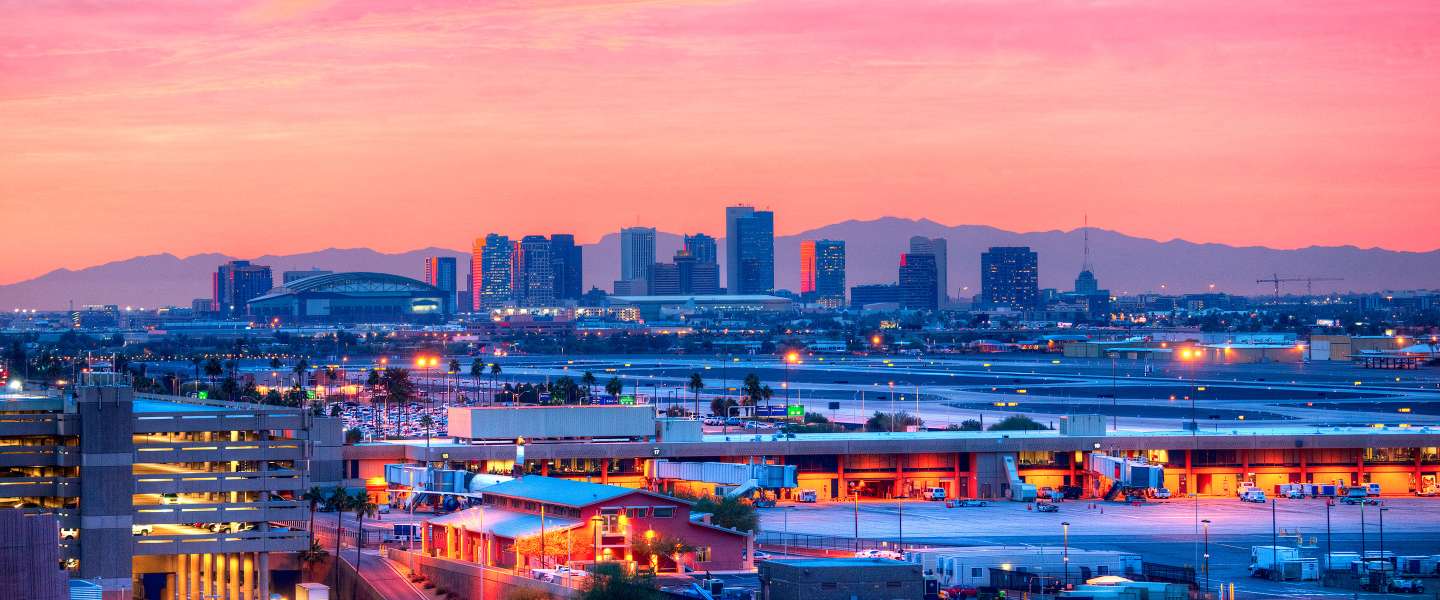Wildlife of India
Mumbai, Gir, Nagpur, Tadoba, Pench, Kanha, Guwahati, Kaziranga
Best-Time
November - March
Stops
8
Experience
Family, Wildlife
Length
16 Days
Type
Tailormade
Highlights
Highlights
Boasting of innumerable Wildlife Sanctuaries and National Parks, India is one of the countries in the world that is home to a vast variety of wildlife including a number of endangered and rare species. This itinerary takes you to the deep wild settings of the nation that are homes of Royal Bengal Tigers, great Single-horned Rhinoceros, Indian elephants, and Asiatic Lions. You will go game spotting to your heart’s content on private walking and driving safaris and spend some incredible nights sleeping out under the star-filled sky. You’ll spend your time not only spotting wildlife but also learning about wildlife conservation and how the locals live in harmony with these wild, yet magnificent, animals.
What will you cover?
What will you cover?
Suggested Itinerary
Suggested Itinerary
Suggested Itinerary
Suggested Itinerary
DAY 1
DAY 2
DAY 3
DAY 4
DAY 5
DAY 6
DAY 7
DAY 8
DAY 9
DAY 10
DAY 11
DAY 12
DAY 13
DAY 14
DAY 15
DAY 16
Day 1 : Mumbai Arrival
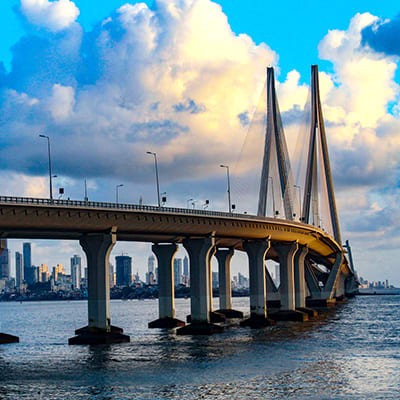
Arrive at Mumbai airport and meet your holiday representative.
Transfer to the hotel to check in and enjoy rest of the day at leisure.
Where to rest your head ?
JW Marriott, Mumbai
Day 2 : Mumbai - Gir
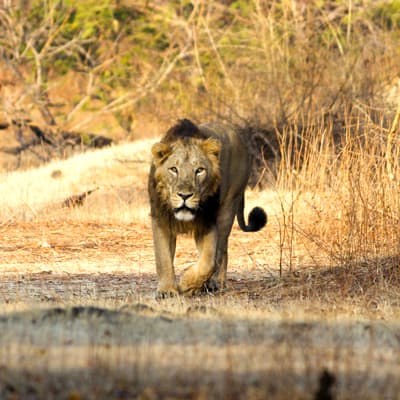
Today, transfer to the airport to catch a flight to Diu. Diu is a small island off the western coast of the Indian state of Gujarat.
Upon arrival in Gir, cross over to the mainland and continue your journey to Gir National Park, the only abode of Asiatic Lion in the world.
Check into your eco-friendly camp and in the evening, you will receive an orientation talk about the Asiatic Lions and their remarkable conservation success story at the Gir National Park.
Where to rest your head ?
Lion Safari Camp, Gir
Day 3 : Gir
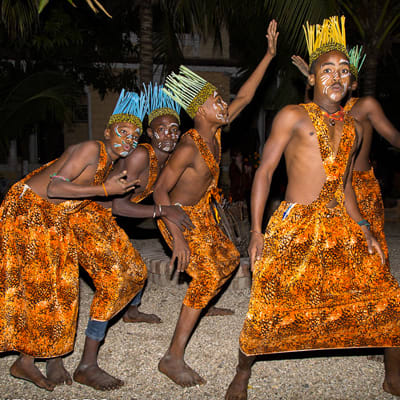
Today, go for a morning & evening Game Drive with your expert naturalist
Gir National Park is the last remaining bastion of the Asiatic Lion and also has the highest density of leopards and marsh crocodiles in India.
Drive through an area of rugged beauty. The park is intersected by low sloping hills with ravines, rivers, and reservoirs. Dry scrub, open deciduous forests, and Savannah make it an ideal habitat for the lions. You may also see other mammals like jungle cats, jackals, striped hyenas, spotted deer, antelopes, and wild boar.
Later in the evening, interact with a group of people of African origin, called the Siddhis. Though totally adapted to Gujarati traditions and culture, they will sing and dance to African tunes!
Where to rest your head ?
Lion Safari Camp, Gir
Day 4 : Gir
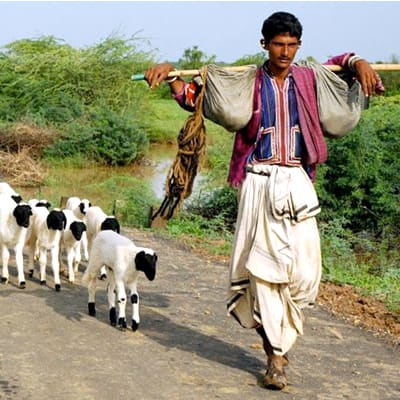
Today morning, proceed into the park, for a morning Game Drive hoping for good sightings of the big cats, marsh crocodiles and many more bird species.
After lunch, visit a pastoral settlement of the nomadic tribal herdsmen, the Maldharis, who live deep in the forest. Learn about their rare interdependent relationship and co-existence with the lions.
Where to rest your head ?
Lion Safari Camp, Gir
Day 5 : Gir - Nagpur
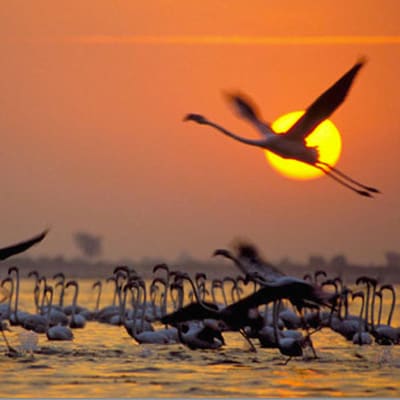
Early morning, go bird watching along the river with an expert naturalist, hoping to spot some of the 300 odd species of birds found here, ranging from water birds to raptors and at least six species of vulture.
After breakfast, drive to Diu to catch a flight to Nagpur via Mumbai. Upon your arrival in Nagpur, transfer to the hotel and check-in.
Where to rest your head ?
Radisson Blu Hotel, Nagpur
Day 6 : Nagpur - Tadoba
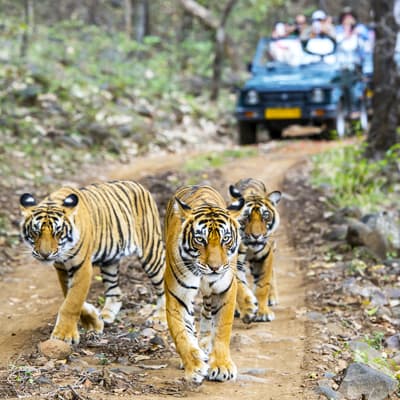
After breakfast at the hotel, drive to Tadoba National Park. On arrival, check-in and after lunch, proceed for a game drive to spot the royal Bengal tiger.
The Tadoba Tiger Reserve is one of India’s premier tiger reserve, boasting of the highest population of tigers, hence maximizing your chances of sighting the magnificent cat.
You will enjoy dinner at the Lodge on the deck overlooking the lake.
Where to rest your head ?
The Bamboo Forest Safari Lodge, Tadoba
Day 7 : Tadoba
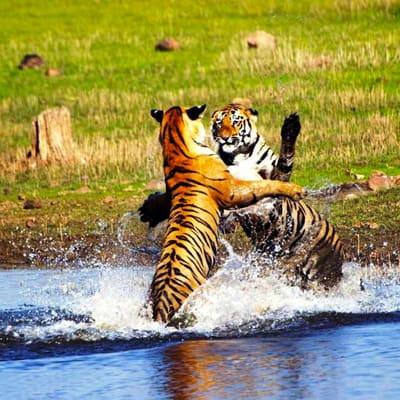
Today, proceed for a morning & evening game drive in the park.
The reserve is the southern extension of the fabled Central Indian landscape, a mixture of open meadows and dense woods, with dry deciduous trees like teak, bamboo, Mahua and Tendu. Apart from the tiger, Tadoba is home to a variety of fauna including sloth bears, leopards, wild dogs and the bison.
Where to rest your head ?
The Bamboo Forest Safari Lodge, Tadoba
Day 8 : Tadoba - Pench
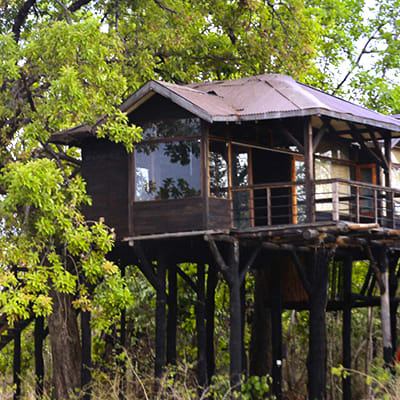
Today morning, proceed for a game drive in Tadoba. After an early lunch, head to Pench National Park.
Pench National Park is situated amongst the southern reaches of the Satpura Hills; the region which inspired Rudyard Kipling’s fabled ‘Jungle Book’. The tribal village of Pench is the setting of the “man village” to which our heroic wolf boy Mowgli belonged.
Arrive at the Pench Tree Lodge located in the undisturbed 16 hectares of forested area in the small ‘Sarrahiri’ village of Pench of Karmajhiri area. Situated in the underdeveloped zone, the lodge supports a conservation policy of not overcrowding areas and making them unsustainable with overexposure to tourism.
Check into your luxurious individual tree houses in the jungle with ensuite bathrooms and private decks that are perched on top of the Mahua trees and supported by stilts. Large French windows allow uninterrupted views of the deciduous forest and grasslands.
After dinner, proceed for a unique nocturnal walking experience.
Armed with torches, you will follow the house nature trail through thickets, old forest, and grasslands hunting for nocturnal wildlife such as civets, owls and more with the help of torchlight.
Where to rest your head ?
Pench Tree Lodge, Pench
Day 9 : Pench - Kanha
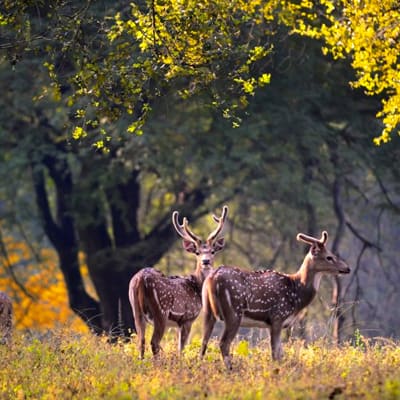
Today morning, set out for an exciting game drive for fans of Jungle Book.
Step into the dense forests of Mowgli’s world of Sher Khan the Tiger, Baloo the Bear, troops of the monkey folk aka the ‘Bander log’ and all their other good friends from the jungle.
Return to the lodge for breakfast and visit the colorful weekly haats (bazaars) where you can see indigenous crafts and products of the area. Get invited to visit a villager's home to share a cup of tea or take a tutorial on organic farming.
After lunch, drive to Kanha National Park.
Spread over 1 945 km² /750 square miles, it is India's finest and largest reserve. It occupies a beautiful location on a plateau in the Maikal range of hills, and comprises a crescent of forested hills that embraces broad undulating grasslands dotted with clumps of bamboo and Sal forest; small pools, and a perennial lake, provide essential drinking holes for the animals.
In the evening, arrive at the Singinawa Jungle Lodge located at Mukki gate area. Check into your individual cottages with ensuite baths and private verandahs.
Where to rest your head ?
Singinawa Jungle Lodge, Kanha
Day 10 : Kanha
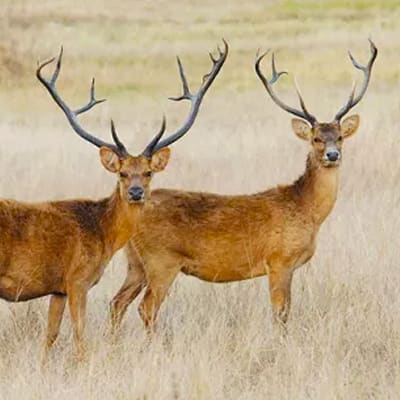
Kanha is renowned not only for its high tiger concentration but as the last remaining habitat of the hard ground 12 antlered Swamp deer- the barasingha, which was brought back from the brink of extinction thanks to the efforts of Kanha’s conservationists.
Today enter the park from the Mukki gate in 4X4 jeeps for this morning’s game drive that will take you through lush sal and bamboo forests, interspersed with vast grassy meadows. The immense maidans create ideal grazing spots for the hundreds of chital, the extremely rare barasingha, sambar deer and the gaur bison.
Later, visit the Museum of Art and Life.
Located within the estate, the 1000 square foot museum is an ode to the indigenous Gond and Baiga artisans. The museum is an allegorical homage to the free spirit of nature with a focus on the ethos of Kanha.
In the afternoon continue your game drive to explore the diverse and beautiful landscape of Kanha.
The central parklands are surrounded by a steep, horse-shoe shaped embankment that rises to the spectacular plateau of Bamhni Dar, which offers breathtaking views of the valley. Rocky crags and ravines are home to roosting birds or a variety of reptiles. Other than observing the vast population of deer, the meadows of Kanha are one of the best places to search for the tiger. You may also see gaur, wild boar, common langur, Asiatic jackal and, with luck, a leopard.
Where to rest your head ?
Singinawa Jungle Lodge, Kanha
Day 11 : Kanha
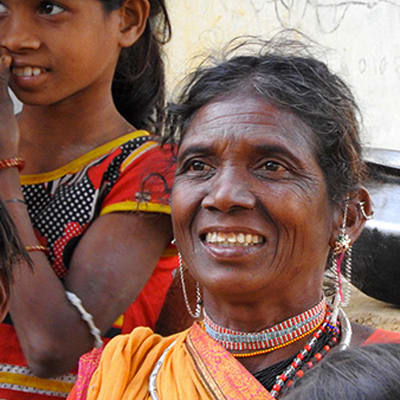
Today, take a “paghdandi” (footpath) into the interiors of the forest on a 20 km track using all-terrain bicycles to Jaldidand Baiga Village in the interiors of the reserved forest.
The village showcases traditional Baiga tribal life with beautifully painted mud huts belonging to primarily agrarian tribal society.
Life in the village remains untouched and allows a rare insight into the anthropological heritage of Central India. The village location also allows panoramic views of the landscapes and forests of the area.
Later, visit the Singinawa Foundation.
Visit the school that has been adopted by Singinawa and participate in some voluntary work with the Foundation. The foundation has in the past built 5 water holes for the core area of the Park, held health camps for 56 villages in the Buffer zone of the park treating 2300 people, helped procure seven 4x4 vehicles for each of the forest ranges within Kanha and are now working closely with the government authorities in connection with health care, education and other activities.
Later, go on an afternoon game drive into the park.
Where to rest your head ?
Singinawa Jungle Lodge, Kanha
Day 12 : Kanha – Raipur - Guwahati
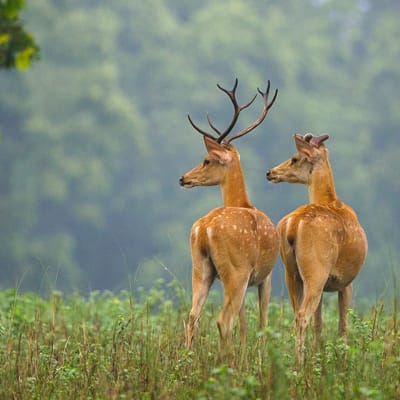
Today drive from Kanha to Jabalpur Airport to catch a flight to Guwahati via Delhi.
Upon arrival in Guwahati, transfer to hotel and check in.
Where to rest your head ?
Vivanta, Guwahati
Day 13 : Guwahati - Kaziranga
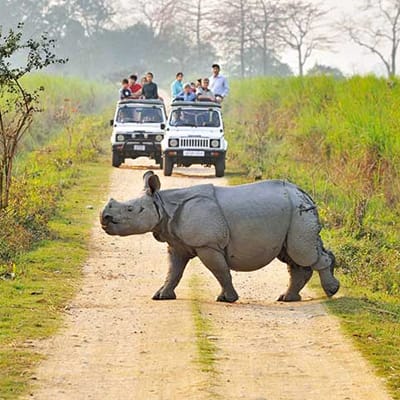
After breakfast at the hotel, drive to Kaziranga National Park.
Kaziranga National Park is famous for its sightings of India’s One-Horned Rhinoceros, the park also offers exceptional sightings of the Asian Elephant and Asiatic wild buffalo. A World Heritage Site, it is recognized as a biodiversity hotspot thanks to its incredible range of bird and animal species, and diverse habitats. Covering grasslands, marshes and tropical forests, the vast expanse of the park stretches from the banks of the Brahmaputra River to the dense forests of the Mikir Hills.
On arrival check into the picturesque Diphlu River Lodge. The Lodge hosted celebrity guests Prince William and his wife Katherine on their recent visit to the Indian Sub-Continent!
Your individual air conditioned raised cottages with ensuite bathrooms and private verandahs are made of bamboo and wood, topped with thatched roofs to blend in with the forest surroundings on the banks of the Diphlu River.
In the afternoon, go on a safari to the Central Range.
Central Range is the best location for spotting rhinos and Asiatic water buffaloes from a fairly close distance. This range is a mix of grassland and wetland.
In the evening, enjoy cultural dances and dinner at the lodge.
Where to rest your head ?
Diphlu River Lodge, Kaziranga
Day 14 : Kaziranga
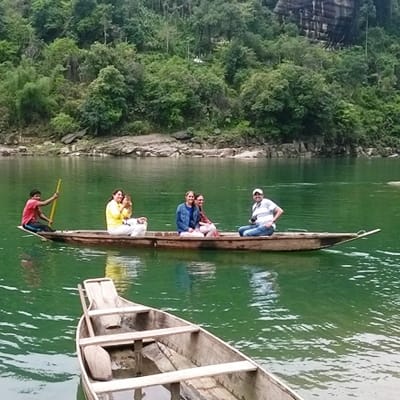
Today morning, enjoy a game drive in the eastern range of the park
Eastern Range is known for its large population of wild elephants and exotic birds.
Kaziranga has been identified by 'Birdlife International' as one of the most important birding spots in India. It attracts a large variety of migratory birds besides being home to a lot of resident birds.
In the afternoon, head for the Dolphin Boat Safari.
Explore the mighty Brahmaputra River and using a country boat, take the opportunity to see the endangered ‘Gangetic Dolphins’, the National Aquatic Animal of India. After you have settled in the boat, the boat will be cast off and you will be given a short safety briefing on do’s and dont's’ on the boat and particularly on wearing your life-jackets. Your accompanying naturalist will spot birds and possibly dolphins for your attention if the river conditions allow. You will also see the 18th-century temple of Durga at a wonderfully beautiful setting on top of a hillock overlooking the Brahmaputra River. Further, you will sail downwards to Bhorali-Brahmaputra Confluence to get a glimpse of the endangered but playful Gangetic Dolphins before returning to Silghat.
Where to rest your head ?
Diphlu River Lodge, Kaziranga
Day 15 : Kaziranga
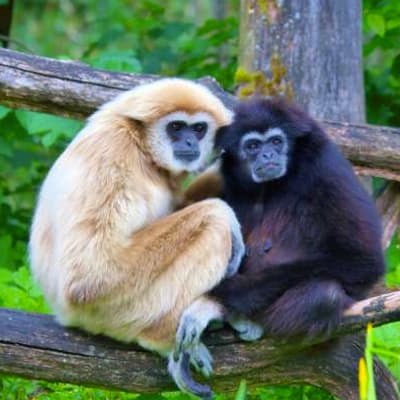
Today morning proceed for a walking safari in the Burapahar Range of the park.
This trek will last about 2 hrs. This range is very unique as it is situated next to Kukurakata rainforest and the river Brahmaputra. A mix habitat of woodland and grassland, ideal for a large number of mammals and birds in the range. It is the only range where you can see the Hoolock Gibbon, Capped Langur, and the Malayan Giant Squirrel.
Return to the Lodge for breakfast and later, visit the local primary school that is supported under ABN Foundation and/or the 'Tribal Heritage weaving center'
Later, proceed for a visit to the homesteads of three different tribes in the area; Bodo, Missing, and Karbi, to get a glimpse into the homes and lives of the tribal peoples. Also, visit the rubber and tea plantations.
Where to rest your head ?
Diphlu River Lodge, Kaziranga
Day 16 : Kaziranga - Delhi Departure

After an early breakfast, drive towards Jorhat. En route visits the Gibbon sanctuary.
It is the only sanctuary where 7 species of the northeastern primates can be seen. It has very rich biodiversity and is home to the only apes in India, the western hoolock gibbon as well as the only nocturnal primate found in the northeast Indian states, the Bengal slow loris. Other primates include the stump-tailed macaque, northern pig-tailed macaque, eastern Assamese macaque, rhesus macaque, and the capped langur. You can also spot Malayan Giant squirrels and numerous birds. It covers an area of 20.98 sq km.
Later, transfer to Jorhat airport to catch your flight to Delhi from where you can catch your flight back home
Where to rest your head ?
NA
Inclusions
accommodation
4 & 5 Star Hotels
meals
All Meals
sightseeing
All Entrance Fees
transfers
Private Airport Transfers
transport
Private AC Vehicle
guide
English Speaking Guide
Exclusions
flights
International Flights
visa
Indian E-Visa
travel insurance
16 Days
Starting from
₹ 255000 per person



